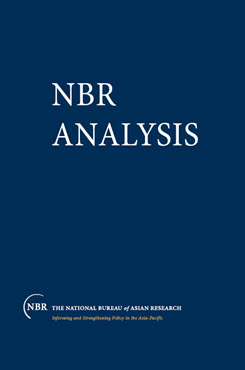Introduction
Islamism and U.S. Policy in South and Southeast Asia
This introduction provides an overview of Islamism in South and Southeast Asia and draws implications for U.S. policy.
More than half of the world’s Muslims live in South and Southeast Asia. Since the September 11 attacks in the United States, both regions have experienced an upsurge in terrorist violence and religious conservatism. As a result, both regions have also become the focus of heightened U.S. policy attention. There are grounds for continuing concern. Drawing, however, on essays by Animesh Roul and Joseph Liow, as well as on outside research, this introduction concludes that South and Southeast Asia differ significantly in terms of the scale of the terrorist threat and the opportunities for engaging moderate Muslims in efforts to respond to this challenge. [1]</a
If the situation in Pakistan deteriorates, the entire subcontinent will face a growing terrorist threat. The situation in Southeast Asia is serious but far less volatile. With the notable exception of southern Thailand, Southeast Asia’s Muslim population is now settling into a pattern of heightened religious piety, conservative but non-extreme Muslim politics, and antipathy for radical Islamist adventurism. U.S. policy in South and Southeast Asia should be grounded on the recognition that Islamists are not of a single stripe but vary across a continuum, ranging from moderately conservative democrats to armed jihadis.
South and Southeast Asia in Comparison
As the essay by Animesh Roul makes clear, blowback from the continuing political conflict in neighboring Afghanistan and well-organized opposition to the global war on terrorism have served to catalyze anti-Americanism and armed Islamist activism in Pakistan. Although President Pervez Musharraf and the Pakistani military have officially joined the campaign against al Qaeda, questions remain as to the depth of support in military circles for the offensive. Some of the armed Islamist groups active in Pakistan were trained by Pakistan’s intelligence services, and it is widely believed that some in the intelligence services still have ties to hard-line groups.
Roul correctly notes that Bangladesh and India have violent Islamist groups, but the challenge these groups present is less severe than the challenge faced in Pakistan. Once known for the strength of its Muslim nationalists, Bangladesh has recently seen a dramatic increase in armed militancy and terrorist attacks. Although comprising only 12% of the country’s total population, India’s 140 million Muslims have long been regarded as conservative in their theological and intellectual views. Islamic education in India, for example, is notably less liberal-minded than in Indonesia. On political matters, however, most Indian Muslims have concluded that it is in…
[1] This introduction provides a U.S. perspective on the analyses and findings emerging from essays commissioned from region-based NBR specialists covering post–September 11 Islamist trends and developments in South and Southeast Asia. Animesh Roul, based in India, has written on the topic of terrorist groups and networks in South Asia, while Singapore-based Joseph Liow wrote on Islamist trends in Southeast Asia.


